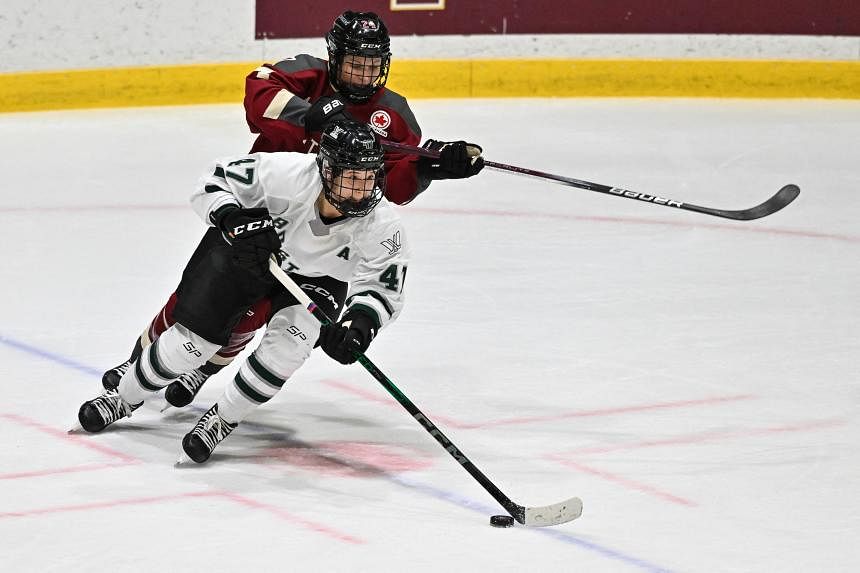NEW YORK – New sports leagues come and go. Most are barely noticed as they play to diehards in relative obscurity, or until they fold. For years, that has been the fate of women’s professional ice hockey in North America. Despite strong ratings during the Olympics and thriving girls’ and women’s college hockey in Canada and the United States, the sport has never broken through commercially.
On Jan 1, the six-team Professional Women’s Hockey League (PWHL) debuted with the intent of changing that narrative. Thanks to a billionaire investor, media deals and the very best athletes in the sport, the PWHL has already sold out arenas, set attendance records and drawn millions of viewers. It is a success built upon a simple idea – treat women athletes like professionals, and fans will watch them.
Recently, I visited the Xcel Energy Centre in St Paul, home of the National Hockey League’s Minnesota Wild, to have a look at the PWHL for myself. Minnesota were up against New York, and the match-up was enticing: Of the 12 starting players, there were 12 Olympic gold and silver medals between them. Despite sub-zero temperatures outdoors, there were nearly 8,000 fans in the seats, a large percentage of them wearing jerseys representing their girls’ high school and other youth hockey programmes.
Getting to that point was not easy for a sport that is historically associated with men. Minnesota, who like to think of themselves as the “State of Hockey”, did not sanction girls’ high school hockey until 1994. It was the first state to do so. In a sign of repressed demand, a startling 24 schools offered programmes that first year, and it has continued to grow since then.
In 2023, there were 15,355 registered girls hockey players in Minnesota.
That enthusiasm, which has been replicated across Canada and especially on the East Coast of the US, drives the passion for world-class women’s hockey.
Despite the lousy start time, the 2022 star-studded ice hockey final between the US and Canadian women’s teams at the Beijing Winter Olympic drew an average of 3.54 million viewers in the US and over two million in Canada, more than any National Hockey League game up to that point in the 2021-2022 season.
In theory, at least, it should not be hard to translate that kind of fan demand into a profitable and popular women’s professional league. But over the years, women’s professional hockey leagues have started and failed, in large part because they simply were not very professional.
Among the most obvious problems was athlete pay – or the lack of it. Rather than spending their time training, players – even world-class ones – often held down jobs off the ice. Meanwhile, teams often played in facilities that did not exactly convey world-class professionalism, including recreation centres and shopping malls. Finally, there were few – if any – opportunities for fans to tune in or stream these games.
What broadcaster is going to buy rights to a league staged in recreation centres?
Fixing these problems would require someone with cash, patience and sports savvy.
In June 2023, Mark Walter, founder and chief executive officer of Guggenheim Partners and principal owner and CEO of the Los Angeles Dodgers, decided to give it a shot.
Working with Billie Jean King, he bought out an existing women’s hockey league and negotiated a collective bargaining agreement for a new league with the Professional Women’s Hockey Players Association. Under its terms, the average salary for each PWHL team is US$55,000 (S$73,700), with a requirement for teams to sign at least six top players to deals worth at least US$80,000 per year.
The money is significant. For the first time, many North American women’s hockey players are closer to being able to afford to be full-time professionals.
Meanwhile, the league sought out and secured better venues, including UBS Arena, home of the New York Islanders, for several PWHL New York games. The professional ambience is drawing fans. Toronto’s season was sold out before it began. And in Minnesota, the first PWHL game drew 13,316 fans, an all-time record for women’s professional hockey.
Television has been just as successful. Before the season, the league locked down a national contract in Canada, regional deals for the three US franchises, and a YouTube channel that anyone can use to stream the league’s games. Access has drawn audiences – the opening game garnered almost three million viewers in Canada.
After the game I attended in Minnesota, New York forward Jessie Eldridge described to a group of reporters what she viewed as the difference between the PWHL and previous leagues. “Having you guys here, having the game on TV for everyone to turn on,” she said. “In the past, there wasn’t the platform to do that.”
The PWHL will not reveal what 2024’s 72-game season is costing its deep-pocketed investor.
“We thought we could do it in a way that pays off over time,” explains Stan Kasten, a board member (and president of the Los Angeles Dodgers). “Not in the first year or two or three.”
In the meantime, he is taking pride in what is obvious to anyone who attends or watches a game: “We got the hockey right.”
That is for sure.
Of course, nothing is guaranteed on the ice, least of all success. But decades of community-led growth in girls’ and now women’s hockey, in Minnesota and elsewhere, means that there is a fan base ready to cheer the professional product that the PWHL is putting out there. BLOOMBERG

